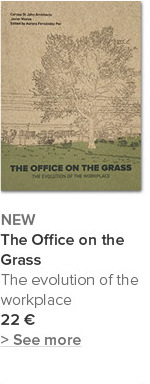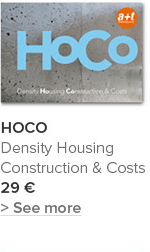How public is your private? Background to Melbourne’s
May 29, 2008

Article written by Martin Musiatowicz
For over two decades something has been stirring on Melbourne’s water’s edge. Ever since the setting out of Melbourne’s city grid in 1837, which was aligned to the Yarra River at the meeting point of the salt waters of Port Philip Bay and the freshwater of the river, the city has been denied direct access to the water.
With the majority of the waterfront set aside for port and industrial activities the city was left isolated from the water; this was further exacerbated by the development of a railway loop on its southern and western edges. For decades state governments and planners have grappled with ways of turning this around and redeveloping the shores of the Yarra for residential, tourist and commercial purposes –and public space. As a fall out of the 80’s real estate boom, the process began with the development of Southbank, on the opposing bank of the river, the site where a casino and a number of hotels and commercial buildings now stand. More recently the construction of Federation Square –a multi functional public project containing museums, entertainment and numerous cultural organisations built on an artificial site– bridged the railway yards on the southern extents of the city grid creating a mediating zone which finally established a relationship with the river. Along this bank of the river a new park, Birrarung Marr, stretches from the feet of Federation Square toward major sporting grounds at the site of the 1956 Olympic Games. However, by far the boldest and largest of the redevelopments, with 200 hectares of land and seven kilometres of waterfront freed up by the relocation of port activities, is the new Docklands area which is currently under construction. The endeavour, enabled by an Act of Parliament in 1995, represents a large scale exercise in rapid city building – doubling the existing area of the CBD. From the unique funding and planning process which drives Docklands, has emerged a delicate, if not tested, balance between private development and public space.
Docklands – Melbourne’s Eixample
In 1996 Ashton Raggatt McDougall were invited by the government body charged with its oversight –Docklands Redevelopment Authority– to draw up a Conceptual Planning and Design Framework for the Docklands to complement their planning scheme. Unlike similar redevelopments of industrial areas elsewhere, only shadows of its former existence have been retained effectively giving a tabula rasa to new development. Responding to its amorphous edge, the plan opted to distinguish the new expansion of the city from the existing city centre. Distinct from the egalitarian ordering principles of the rational grid of the CBD, the proposal was for similarly “fluid” strategies of zoning, massing, and circulation. Access and connection to the city were reinforced by a new bridge at Collins Street and the pedestrian overpass at Bourke Street –both extensions of the city grid.
The overhaul of Melbourne’s major train station, Spencer Street, designed by Grimshaw and Partners which is almost complete, will alter the condition at the edge of the existing grid. The city loop tram has already been extended down to the water at Harbour Esplanade, and in the future commercial trams will further strengthen the connection between the existing and new districts. A spine of major public spaces –the esplanade and the park– was defined to give the otherwise disparate developments a sense of cohesion; the entire waterside perimeter was retained for public access. The development areas were defined as neighbourhood and each tendered to different consortia, each responsible for providing infrastructure, public space and building the developments. Since this early time, The Docklands masterplan has evolved dramatically as the contracts with the developers for particular districts have been negotiated. Nevertheless, the precinct still demonstrates very different urban strategies to those of the city. Now with several of the parcels developed and others underway, access routes open, and several public spaces slowly materialising, it is possible to get a glimpse of Melbourne’s future waterfront in use.
Australia’s expenditure on public building is relatively low when compared to say Spain or France; its English heritage imbues our economy and politics with a definite hint of conservatism. Following a swathe of privatisation projects, dating back to the 1970’s, selling off public assets –everything from prisons to telecommunication networks to airports– and thus reducing expenditure on public provision, governments rather than spending on public interest have increasingly focused on accountability. The trend has been to shift the burden of development and spending to the private sector, and this has been the model which was used on Docklands. While the government made initial investment in forming a strategic framework, masterplanning and oversight regime; the rights to build on each of the parcels of land were sold to individual consortia. Each of these subject to stringent planning reviews from the authority to satisfy criteria of design, amenity, diversity, integration to surroundings, and financial viability, to name a few; and most importantly with strict requirements of developing a certain proportion for public use and public open space. Government’s major concern has been to ensure risk is shared “fairly”, the interests of the community are protected and government liability is limited. Of greatest interest to this issue of a+t are the fallouts of the power relations between public and private sectors in making Docklands a reality, and their effect on public space which is indeed apparent. What has made Docklands economically viable is in part the shifted burden of financial risk from government to the private sector –without which the whole process would have been unlikely– but the concessions made to business interests which reside in ‘public’ space are problematic at best.
Sub-contracting Public Space: What is it for space to be public?
In its purest utopian form, based on notions of democratic individualism, public space or the public realm can be defined by its openness. Historically, the term refers to physical spaces such as streets, squares, and parks, and certain buildings such as public libraries or museums which are available for everybody without criteria of use or entry. The openness of the public can be seen by its potential for activity, protest, encounter and expression –and centrally– on the lack of external or higher control of such actions, that is by some form of a “big brother”. Possibly a more balanced definition sits somewhere between this idea of openness and the broader interests of society –civic mindedness. To make this notion even more complex contemporary cities are more and more a delicate balance between public openness, the civic interest, and the private –or more often corporate– interests. However, too often the term ‘public space’, particularly when used by politicians, developers, or designers, is simply understood as empty space, walkways and piazzas between buildings which, through their unassigned program or commercial purpose, become defined as public space. However, as Kathy Worpole and Liz Greenhalgh argue, what makes up public space is its use. Space is dynamic, and only comes into being through its use over time.1
Privatising the provision of public space as if it were a state owned business is fraught with danger, ideas of private policing and control spring immediately to mind. So returning to the definition of “public-ness”, how will the openness of public realm be protected in this example? What is striking at Docklands is the distinct lack of any other public buildings or diversity of program at this early stage –everything is commercial or residential, and the commercial is hospitality. Cities need public infrastructure schools, libraries, town halls and so forth, to provide for society’s communal needs. Commercial and private developments essentially only serve the individual, effectively there is very little to stop developers prioritising the interests of their customers –in fact it is their responsibility to their share holders; only in this case it is over society’s need for openness and accessibility. The corporatisation of urban environments has been lamented by many, and if openness is the test of public-ness, then Docklands is unlikely to pass; the responsibility lies firmly in the hands of government, whose shareholders are the citizens, to defend the public realm.
There are a number of problems presented by this process, as the public realm can easily be reduced to a piece of non-profit space fill. This is especially apparent in the way the esplanade is being built in small sections, areas in front of new buildings are constructed to provide the essential foreground and then gaps have been left to be built later. Generally, it appears as though the freedom of infrastructure development and design of public space threatens to undermine the cohesion and legibility of the area as a whole. The interface zones between the different precincts, the street layout and treatment of the water’s edge, while not finished, may end in a fractured outcome. The result is somewhat confusing –especially to the visitor– and it is difficult to imagine the public’s adoption of this as part of the city at the moment, most of all any sceptical Melburnian! At this stage, while Docklands appears busy, it is essentially one layer of society coming to eat or coming home to sleep, the activities are limited, and the public have been reduced to the consuming. Clearly, it seems crucial to make the development a part of the local life and not to send it down the path similar to London’s Wharfs and diminish it to becoming simply an oversize business park, a place to sleep and feed business tourists or an area of vertical gated communities for the rich.
Another striking example of this is at New Quay, the first of the completed stages finished in 2002, where a very clear delineation between developed ‘public’ zones (that is café seating) and the public realm of the waterside esplanade exists. Rather than blurring the relationship between mixed use commercial program at the base of residential towers to activate the public spaces, these have been elevated and screened on a small podium effectively creating an edge zone with no program frontage and an inner private circulation area to access the podium –a private footpath. What counters this somewhat are a series of independent pod pavilions which animate the water’s edge, for example those by McGaurran Giannini, which house restaurants and bars. Nonetheless there remains a distinct feeling of dislocation from the hierarchical treatment of the private realm and the public. The potential for a variety of uses for this space or the invitation for users to stop or relax is restricted, even looking at simple things like street furniture.
What has begun at Docklands as a somewhat disjointed private-civic partnering experiment will hopefully over time develop its own identity and community. The concept of the major spine of public space reinforces this potential by providing a framework for future uses to evolve its form and diversify its makeup. The concept for the esplanade, developed by ARM and Room 4.1.3 used the analogy of a skyscraper laid down horizontally and created a series of bands –a sort of open-plan superstructure. The hope is that in the future as the first build out of the site is completed in the next decade and life starts to burgeon, a finer grain and scale of development will imbue the area with a more diverse mix of program and use. In fact this may be the genius of the ARM strategy –understanding the complex process which was required to make this happen. While the developers initially need to protect profits, and to enter the venture cautiously, over time a city will evolve and other developers and interest will join in –this can not happen in a decade and this is a work in progress. Rather than the water itself, the key ingredient to its success will be the strength of connections made with surrounding areas –the CBD, and other developments along the city’s Yarra shores– and the availability of a diverse range of public spaces and programs within the developments which cater for the widest cross section of society.
1 Worpole, K. & Greenhalgh, L. The Freedom of the City, 1996, Demos, London, p. 12.
Martin Musiatowicz Australian architect based in Melbourne. Photos by the author
Article published in a+t 26. In Common II






















 I've read and agree to
I've read and agree to 


